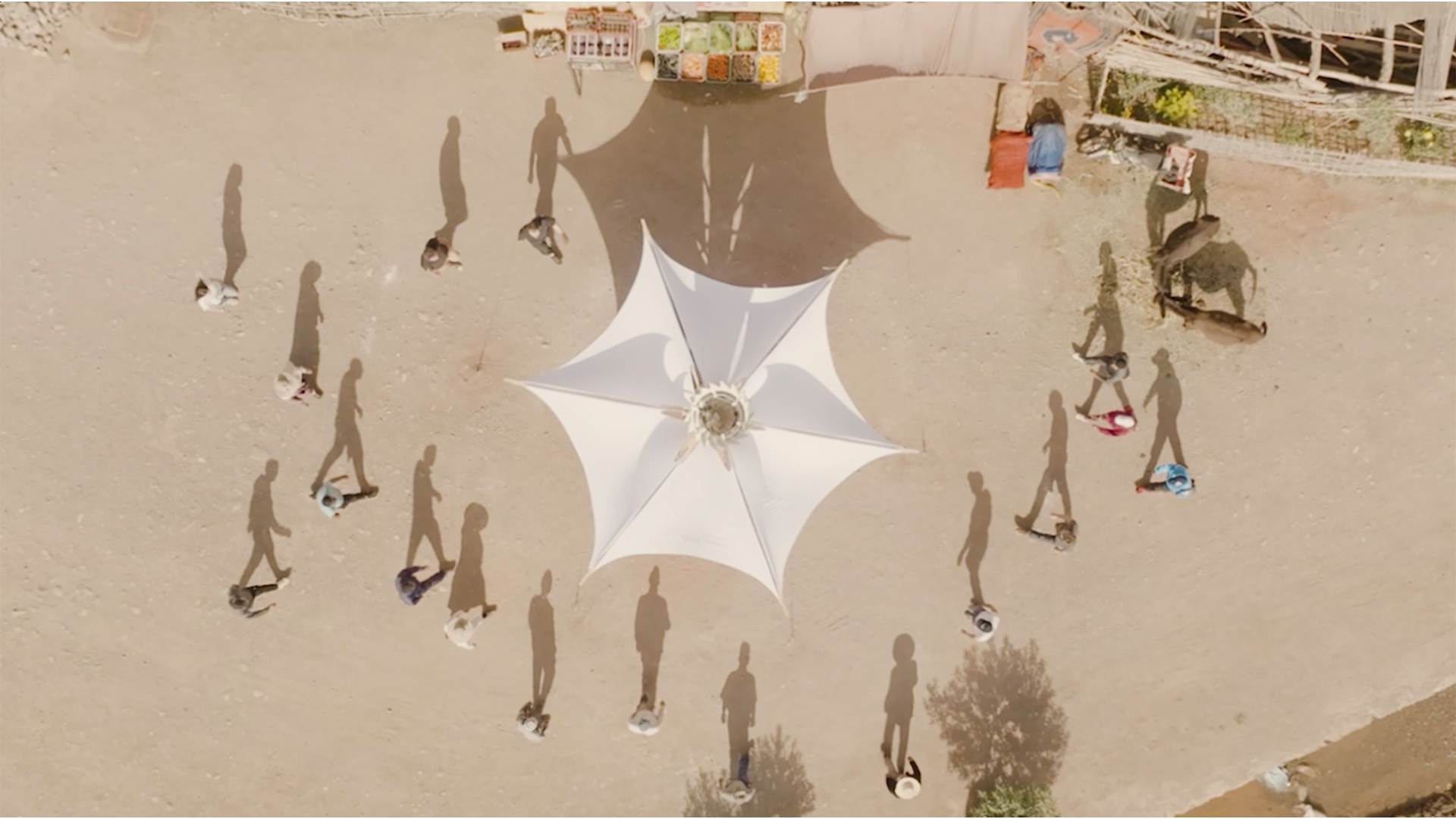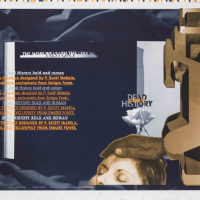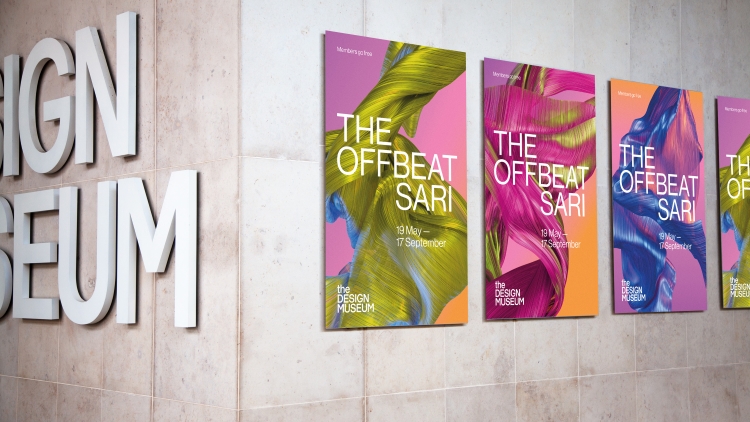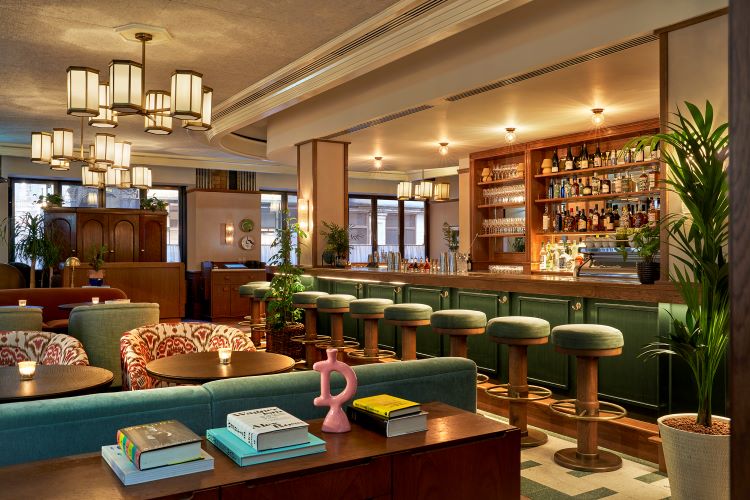Frog designs electricity-free drinks cooler for Budweiser
Budweiser and BTEC Paris partnered with consultancy Frog to create a sustainable drinks cooler aimed at developing countries.
Budweiser, BTEC Paris and Frog have designed what they claim to be the first cooler able to refrigerate drinks below 6°C without using electricity, inspired by ancient cooling techniques.
Designed for use in remote areas without regular access to electricity, the Bud Ground Cooler can cool up to 300 drinks in clay pots stored underground.
The design also features an umbrella-like top to shade the cooler, vendor and customers from the sun.

According to Benoit Bomal, science, innovation, strategy and design lead at Frog, the method used for the cooler is based on zeer pots – an ancient evaporative cooling system that places one pot inside another with moist sand in between.
While the pots are generally “well known to designers”, and others have previously worked at modernising the system, he says, “we were able to gather designers and engineers specialised in thermodynamics and fluid mechanics to collaborate”.

“The main challenge was to find the right balance between the different sources of cooling involved – geothermal energy, the use of ceramics for the zeer pot and wind acceleration – to land on a final design that optimizes all these factors”, Bomal says.
“The second challenge was geology and weather constraints”, he adds. “We started our project in the Atlas region of Morocco, but we needed to make sure that this could still fit all types of countries and regions”.

“We placed nine-cylinder clay pots that hold the beverages four metres below the ground”, says Babatope Aiku, sustainability engineer at Frog. In the new system, the air is still refreshed by evaporation, but with the adapted pots “we have doubled air circulation, increasing freshness”, he explains.
“The fresh air below ground is cooled off even more thanks to an air current that goes through a mast sitting 4.5 metres high, in a process known as the Venturi effect: cool air above simply flows down the pipe directly into the ground”, he says.
Andre adds that the flower-like shape of the canopy is “not only decorative”.

“The shape of the shade cloth, inspired by the sailing world, is optimized to capture the wind and allow the centre pole to accelerate the wind flowing through the system to cool it”, he says.
As the system requires placing the drinks underground, “the challenge is then to give access to users to what is stored there”, he says.
The product need not only work for drinks, “but also food, medicines or anything that would need to be kept cold. With the help of a rack and pinion system and a crank, it is possible to easily raise and lower these elements in the tank”, he adds.
Replicable by local communities
“We designed the system so that it could be fully assembled with a shovel, a screwdriver and a wrench. By going on the ground to build the system with the villagers, we were able to verify that the construction steps were accessible by all. We also needed to discuss their needs and how they would use the system”, says Guillaume Andre, senior designer at frog and project lead.

While the prototype materials were mostly sourced in France, Aiku adds “we made sure to use materials that could be sourced locally everywhere, as the idea is that the coolers will be manufactured locally”.
“The on-site installation confirmed that all parts of the system could be manufactured by local craftsmen”, he says.
Developed as part of a campaign
The prompt for developing the innovation was a campaign for Budweiser led by BETC, which was tasked with coming up with an idea which promoted the brand while tackling a social or environmental issue.
Considering a lack of access to power in some regions of developing countries, “the idea was to find a solution that would be sustainable and wouldn’t need a power supply”, BETC creative director David Martin Angelus says.

BETC partnered with Frog to make use of their team of “designers and engineers specialised in thermal systems”, he adds. “They recreated in their workshop an environment close to desert conditions in order to prototype and test different concepts and materials, to design and to perfect the solution”.
 Tim Moerman, sustainability and ESG director at Budweiser comments: “Instead of investing in traditional media like billboards, we have used those funds to install these branded coolers in local businesses. This way, we can promote our brand in a way that is useful for communities.”
Tim Moerman, sustainability and ESG director at Budweiser comments: “Instead of investing in traditional media like billboards, we have used those funds to install these branded coolers in local businesses. This way, we can promote our brand in a way that is useful for communities.”
The Bud Cooler is being installed across regions in Morocco, “and will expand to other countries such as Turkey, which has already signed up for the initiative”, Moerman adds.
-
Post a comment








